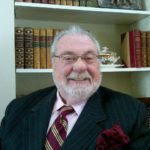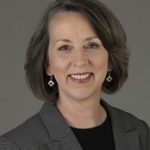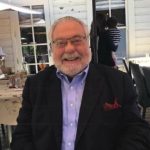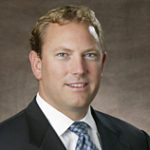by Deborah Lazaroff
Jane Gardner and Joe Rodriguez have been doing business together as Harbour DNA since 2005. Prior to that they worked together at Foote, Cone & Belding, the esteemed San Francisco advertising agency. Jane spent 21 years with the agency before joining an educational software company, and Joe went on to work for technology startups during the dotcom boom followed by a stint at Macromedia. They met once again when Jane began her own business and Joe brought her on as a consultant on a Macromedia project. They worked so well together they decided to form a business partnership, and Harbour DNA was founded. Jane and Joe work with a broad range of clients, from corporations like IHOP to social media start-ups like Efficient Frontier and nonprofits like Silicon Valley Community Foundation. They especially enjoy working with clients that are “breaking new ground or doing good in the world—or best of all, doing both!”
What particular need did you seek to fill by starting Harbour DNA?
Jane: In advertising we worked with brands to create communication strategies, and the insights we had were so powerful we always regretted they weren’t used to help the management of a company guide their strategic planning and corporate social responsibility. We saw a genuine opportunity to take the disciplines we bring to understanding a brand to understanding what we call a company’s DNA, their core strengths. We help companies work from these core strengths, especially if they’ve drifted away from their moorings because they’ve lost sight of them—which often happens in the process of doing business. We help them understand what’s at the heart of their organization and what they truly mean to their customers and clients.
What are some of the elements of a company’s business structure you examine in determining those core strengths—that DNA?
Joe: We look at brand strategy, business strategy, and organizational behavior and values. A lot of companies have a very defined business strategy, but their brand actually stands for something else. And the way they operate and their values are sometimes divergent from these. For example, if a company promises a great customer service experience but their business strategy doesn’t reward the employees or partners who make this possible, they’ll have mixed results. We show people the power of unifying all these areas. It’s hard for any organization to work on these issues because everyone is so close to the situation that they lose their objectivity. We come in with no bias and no agenda other than finding out the truth and offering that organization a clear encapsulation of their core strengths, where they are on target, and where they are off target.
Jane: We talk to the key people in the company, the leadership team, to understand their perspective on their core strengths. We also talk to their customers or clients to understand their perspective on the company’s core strengths. We give the company a comprehensive, 360-degree view of their organization. One of the things that makes us different from other consultants is we’re trained in advertising, where you have to get right down to the heart of the matter: “Okay, you have 30 seconds, what are you going to say about your product?” So we bring a lot of focus to organizations. We tell them their strategic plans can’t have 45 initiatives; on which three initiatives do they want to focus? It’s a discipline of simplicity and getting down to the essence, really pruning back what’s not central to an organization’s core strengths and what it needs to accomplish in the next five years under its strategic plan. It’s easy for a business to get distracted by what the competition is doing, or for a non-profit to get pulled in another direction because they receive funds earmarked for a specific program. In each case they drift away from their mission and have a lot of trouble getting back on track.
You spoke of interviewing the leadership in this process. Do you also speak with rank and file workers to get their perspective on the company’s core strengths, positioning and strategy?
Jane: Yes. We engage and work closely with them in tandem with the leadership team, because they have important insights and because they need to feel ownership of the plan we develop..If people feel they’ve been heard, they’re willing to come along. If they feel they’ve been left out, it’s hard for them to come along.
Exactly. It’s very hard to get buy-in from the workers if they haven’t been part of the process in some way. Now what would you say makes your consulting business different? Is it that advertising focus on branding and positioning and getting down to the basic elements?
Jane: That’s one aspect, but I would say even more important is that Joe and I have each spent 20+ years being managers and functioning in the corporate world, so we really understand how organizations work. There are a lot of consultants who have theories, or analyze data, but if you haven’t actually been part of a management team or been a leader, it’s hard to know how to help those who are. We’re able to coach people from the perspective of having management responsibility and having been executive vice presidents in major American corporations. We also offer a very well honed ability to focus, an understanding of the customer perspective that not everyone in the corporate world has, and a number of different disciplines in which we have expertise. We know communications, we’re both MBAs, and we’re experienced strategic planners who know how to create effective strategic plans that people use every day. We know how to motivate a team and how to create buy-in. We also have a genuine interest in helping people be their best.
You don’t set a time limit; you take as much time as it needs to help the client identify their DNA and work most effectively with it.
Joe: It’s important to have clear strategic insights about a client’s business and problems, but this has to be coupled with the human insight to know how to work with the results. How to make things happen—to align incentives throughout the organization, both financial and psychological, to match the business strategy. That’s an important part of a comprehensive, holistic approach.
Right. It’s not just developing the strategy but also finding the most effective way to execute that strategy and get buy-in.
Joe: Exactly. And when clients ask us to return to give them a tune-up, it’s knowing how we should coach them in getting back to the core strategy that we developed with them.
Are there other things you do to help companies identify and develop their core strengths?
Jane: We do business analysis to understand the sources of their profit and how the business reflects their core strengths. Many times we’ll give them perspective on business decision-making based on our overall analysis, which may also be informed by consumer insights.
Joe: We often ask for their core business data to take a fresh look at it. Then we come up with our hypotheses, present them to the leadership team, and ask them to prove or disprove our theories.
Jane: Many times we’ll be in a situation where we’re looking at the context in which they operate, their category, the trends that influence their business or organization, and whether what they’re doing fits or doesn’t fit with emerging trends. Have they overlooked something that the competition is doing that would also be an opportunity for them? So we’re constantly bringing them back to whether something they do reflects their core strengths as an organization.
Joe: People often ask us if we specialize in any given sector like financial services or pharmaceuticals. We don’t, and one of the reasons we don’t do is that we’re general business strategists. We bring insights and innovations from one industry into another. For example, we’re working with a leading edge social media company, and at the same time we’re working for a construction company and a major government organization. Each of these has its individual core strengths and ideas, and sometimes we bring ideas from one organization to another.
Jane: We’ll find ideas that are working in one business sector and apply them to another. In many of our projects we explore the best practices within that industry. But a lot of our secondary research is in best practices in general. Many times there are a number of organizations separately reinventing wheels that don’t have to be reinvented. So we do strong secondary research: we’ll interview experts in the field, but we’ll also interview experts in sectors that are not competitive to find out the current best practices in general. Most organizations don’t have the time or the personnel to assign to this task.
Joe: One thing we do that very few other consultants do is conduct expert sessions using our network of approximately 1,000 people we know personally through 30 years of business. We hold salons where we bring together experts who don’t compete with our clients. For example, a few years ago we were working with a major restaurant chain that wanted to improve their customer service. So we brought in the head customer service persons from a variety of different industries including hotel, automotive and retail. We even included some unexpected ones, like one of the highest-rated primary care doctors in San Francisco who believes patient care is customer care. And with this group we discussed trends and best practices in customer service. Not just in the restaurant industry, but in general.
Unlike other consultants, you’re not looking at a particular industry and basing your strategy in working with your clients on that industry, but on best practices overall in customer service and other areas.
Jane: We draw from best practices within the industry and beyond. The distinction is that with our advertising backgrounds we tend to be creative thinkers, and we encourage our clients to be more creative in their thinking by taking inspiration from other industries. Many companies are only reactive to their nearest competitor, and they simply imitate them. Number One and Number Two fight each other and each imitates what the other is doing. They stop thinking creatively. We help companies get out of that trap. A lot of consultants stay in that “let’s look at what your competitors are doing,” and their strategy is wholly reactive. We help people think more creatively about their opportunities based on what’s out there, ideas in other industries and what their customers want.
So they can be proactive.
Jane: Yes. And many times we will generate concepts and take them to the customer group and ask, “What about this? Or this?” We get people to engage with us. It’s usually unproductive to simply ask customers, “What do you want?” Because they can’t specifically tell you. But if you offer them different options and describe them, they’ll let you know which ones they like or dislike and why. And from this you get clues to what you should pursue.
Now when and how did you two first meet Bob Mobley?
Jane: I met Bob’s daughter Jennifer at a party in San Francisco, and she asked me what Joe and I did. And because we practice what we preach, we have it down to a onesentence statement, which is that we help organizations find and work from their core strengths—their DNA—so they can be more effective. When I told Jennifer this, she said, “You know, I think you can help my father. I want you to meet him.” So the next time Bob was in town, we had lunch, and one thing led to another. We ended up trading services because he had some terrific ideas for us as well. Now this is an interesting example of the power of getting what you do down to a single sentence. To say it in a social situation with people chattering all around you, and somehow it gets through is proof of how powerful it can be. And that’s what led us to Bob Mobley.
What impresses you most about Bob’s leadership coaching?
Jane: We especially admire his values. He comes from a very ethical place, and we greatly appreciate that. But when we interviewed his clients, we also developed a great appreciation for how he is able to help up-and-coming, rising stars who have strong technical knowledge but are not good at communicating with their clients and customers in sales situations. He helps them raise their game substantially, and with that, entire companies’ fortunes. And what a powerful set of skills he has to make that difference! At the same time we feel a commonality with him in that he personally cares about how his individual clients develop, so he keeps in touch with them over the years. We feel a strong connection with what Bob does and its impact.
Joe: Many of the Bob Mobleyisms are very powerful. For example, he teaches his clients to talk very straightforwardly rather than take someone through a 60-slide PowerPoint presentation where you bury the recommendation at the end. In the first five minutes, when you have 95 percent of their attention, tell them what you’re going to say and what you’re going to recommend, and the road map you’re going to lead them through in the presentation. Once you’ve let them know all this up front, they’re much more willing to listen to you as you talk for the next 15 minutes. But Bob even turns that on its head. He trains people—and we’ve used this a lot in our own business—to get the clients to talk 80 percent of the time and you talk 20 percent of the time. If you’re able to do that, you can discard the 60-page PowerPoint presentation entirely to have a genuine conversation about their core business challenges and how can you help them.
So you’re doing more listening than actually presenting.
Joe: Bob would call it active listening, where you have to be very much on top of your game. You have to ask the smartest, most strategic questions to get them to share what they need to share as well as to develop that rapport. Being a good listener requires more skill than being a good talker.
Jane: You know, there’s a great quote—I may even have gotten it from Bob—“What passes for listening in America is waiting for the other person to stop talking so that you can start talking again.” DL: (laughs) That definitely sounds like something Bob would pass on.
Joe: Bob teaches you that you don’t have to prove you’re the smartest person in the room. You don’t have to prove you’re the most empathic, the best listener, or that you entirely understand their problem. If you get people talking about their problem, at the end of the presentation, they’ll like and trust you.
That’s right, because a connection has been formed. One of the mistakes that most people make in sales is that they go into the meeting believing they have to prove that they’re the expert in say, financial services. But the potential client is already under the presumption that if you’re in this meeting, you are an expert. What they really want to know is what you can do for them. That’s the perspective a lot of salespeople—especially those dealing in highly technical products or services—tend to lose sight of.
Jane: I think that’s right. And again, our training in advertising is based on paying attention to what the customer says, because the brand exists in the customer’s mind. It’s that discipline. I think for a lot of people in financial and technical industries it’s all about their knowledge and their data and analyses. It’s hard for them because they’re not trained to think about putting themselves in the customer’s place. Bob provides the training that helps them to do so.
So you would say Bob’s greatest strength is his ability to enable people to communicate effectively, and as a result they become more effective overall.
Jane: Yes. It’s to help the best people in the organization to be more effective, because in any organization the top performers—the really gifted ones—do most of the achieving. And if you make your best people 25% more effective, you’ll see a significant impact on your bottom line. Too many companies put everyone through a generic training program when they’d be far better advised to bring in Bob to work with their strongest people because it’s those people—typically MBAs hired for their technical prowess—who most need training in how to communicate effectively with clients and customers to draw them out.
Right. That’s what it really gets down to, being able to effectively communicate with your clients and customers.
Joe: One of our questions for Bob’s clients was, “what would you call Bob? Is he a communications consultant? A team consultant?” We wanted two words that really captured how Bob functions in a corporation today. After talking to his clients, we came down to these two words: Leadership Coach. Bob’s techniques have a positive impact not only on an executive team’s ability to sell, but also on their ability to lead. He is a Leadership Coach, and the line on his business card is Making high-performing executives more effective immediately—by transforming the way they communicate. Those words evolved after 15 conversations with his clients. When those clients received this caption, they said, “Yes, that’s exactly what Bob does.” DL: Bob’s coaching gives clients the ability to immediately see how they communicate, to see the difference before and after. Would you say that helping people see the difference when they communicate effectively is the one aspect that sets him apart?
Jane: People do see the difference immediately, so that’s a very good tool. But it’s much more about Bob’s wisdom and how he shares it.
That truly does set Bob apart. He has a huge font of wisdom, from his career and life experiences to his travels, all of which inform his coaching in a way that other coaches can’t possibly match.
Joe: Absolutely. Another quality Bob has that we’ve seen time and time again is very high emotional intelligence. He knows how far he can push someone, whether he needs to be firmer or more supportive. He has the ability to understand what motivates a person and to recognize their fears, and he works thoroughly with them to overcome any obstacles they may have to becoming their most powerful self. He’s a careful listener and a careful observer, and he takes his keen insights and uses them with technology to truly help people bring out their best game. And he does it, again and again.
Now how would you say Bob has helped you? You mentioned that he weaned you off PowerPoint.
Jane:
(laughs) Well, whenever we go into big meetings, we review our Bob Mobley guidelines. We’ve done all our work, so we review how to make the meeting all about our clients, make sure we’re giving them a chance to talk. We also review how to explain things up front that will give them a clear idea of what we’re saying, and if we’re using any slides, how we might edit them to make the presentation shorter and more visual. We also remind ourselves to use the power of silence. These are all things Bob taught us. He gave us a mental checklist for meetings that we use all the time, and we find it very powerful.
Joe: Bob has a number of things he asks executives to do. He created a business card with several points to keep in mind whenever they’re going into a big meeting. We use that business card ourselves; we always carry it with us. It’s a good reminder of what’s most important in a big meeting.
In one of your responses to the initial questions, you said that most of all you value your ongoing relationship with Bob, that he’s “a superb coach, and a great guy to have in your corner.” So you continue to consult with him.
Joe: Yes. We’re having dinner with him next week.
Jane: We’ve partnered with him on some client assignments, and it’s been great, because after the client meeting we’ll discuss the results with each other. We’ve used each other to bounce ideas off of, and we’ve been able to help some of our clients even more than we could have alone.
Joe: It really comes down to this: our values are congruent in a world where people are doing whatever it takes to make money. Bob is somebody who really walks his talk. We try to do the same and to always look out for our clients’ interests. It’s great to be allied with someone who does business the old-fashioned way when it comes to values.
Jane: Plus Bob loves his work. He loves helping people. And people know that if they’re facing a tough situation and they need some advice, they can call Bob and he’ll help them out.
Your company philosophy is built around the concept that sustainable success comes from being oneself, and understanding what makes you unique as an individual and as a company. This same concept is reflected in Bob’s coaching philosophy. How do you believe his coaching reinforces and nurtures this concept in others?
Jane: One of Bob’s core tenets is “be yourself.” You’re much more effective when you’re you. So giving people the permission and techniques to be themselves in how they communicate from one setting to another is central to what Bob does. I don’t know why, but people think they have to be someone else; that what they are is not enough. So they hide their warmth and personality and come across as drones.
Bob helps them recognize that warmth and personality are actually assets; that they shouldn’t feel they need to fit into a mold. That being yourself and reaching out to form a bond with your client or customer is what truly makes a difference. Because when it gets right down to it, people like to work with people with whom they feel comfortable and share a common understanding. No matter how gifted a person may be or how much experience and knowledge he may have, if they’re not comfortable working with him, they’re not going to do so.
Joe: Yes. That’s really the difference between Bob and other people that coach in communications and leadership. Bob’s approach can’t be reduced to two or three generic bullet points. It’s customized; it looks at each person, helps her to be herself and to bring her unique strengths to the forefront. Bob knows how to do this. He knows how to take people that are very numbers-oriented and make them feel as comfortable up at a podium as they are discussing business results. He knows how to get into people’s psyche and release them from anything that’s holding them back or not allowing them to be their absolute best.
Harbour DNA pretty much does that for businesses, in terms of identifying a company’s DNA, finding the core strengths and building a business strategy from them.
Joe: You know, Bob’s been out in the business world talking about being yourself for 25 – 30 years, and in designing our website four years before we met Bob, we talked about being yourself, using the exact same words. We have the same core beliefs and we just naturally found our way to each other. It’s interesting that, by pure chance, these two businesses came together and have been mutually benefiting from each other’s wisdom, insights and skills ever since.
It’s a symbiotic relationship, in the truest sense of the word.
Jane and Joe: (simultaneously) Yes.






